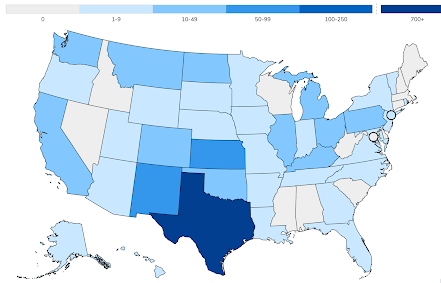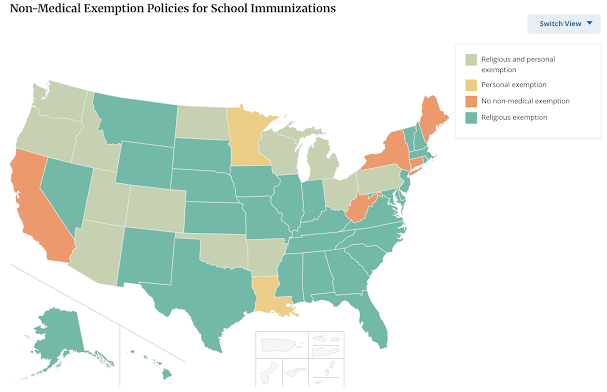The nonpartisan Kasier Family Foundation (KFF) News service highlights some of the changes that won House approval and await consideration in the Senate. Presumably convinced that Obamacare won't get repealed anytime soon (after 60+ attempts to do so have failed), the GOP intends to kill it with a thousand cuts. Here are four:
1. Tax Credits Are Jeopardized by Enrollment Hassles
The House-passed bill, which runs more than 1,000 pages, would create paperwork requirements that could delay access to tax credits for some enrollees, potentially raising the cost of their insurance.
More than 90% of ACA enrollees receive tax credits to defray monthly premiums for their coverage. There are two key provisions for them to watch.
One would end automatic reenrollment for most ACA policyholders each year. More than 10 million people were automatically reenrolled in their coverage for the 2025 plan year, with their eligibility for tax credits confirmed via a system that allows ACA marketplaces to check government or other data sources.
The House bill would instead require every new or returning policyholder each year to provide information on income, household size, immigration status, and other factors, starting in 2028. If they don’t, they won’t get a premium tax credit, which could put the price of coverage out of reach.
“Everyone who wants to either purchase or renew a marketplace plan will have to come with a shoebox filled with documents, scan in and upload them or mail them in, and sit and wait while someone reviews and confirms them,” said Sabrina Corlette, a research professor and co-director of the Center on Health Insurance Reforms at Georgetown University.
She and other policy experts fear that many consumers will become uninsured because they don’t understand the requirements or find them burdensome. If too many young and healthy people, for example, decide it’s not worth the hassle, that could leave more older and sicker people for ACA insurers to cover — potentially raising premiums for everyone.
But supporters of the House bill say the current approach needs changing because it is vulnerable to waste, fraud, and abuse.
“This would ensure that enrollees need to return to the exchange to update their information and obtain an updated eligibility determination for a subsidy — best protecting the public against excess subsidies paid to insurers that can never be recovered,” the conservative Paragon Institute wrote in an April letter to top Department of Health and Human Services officials.
2. Having a Baby? Getting Married? Expect Coverage Delays
Today, people who experience life changes — losing a job, getting married or divorced, or having a baby, for instance — are considered provisionally eligible for tax credits to reduce their premiums if they sign up or change their ACA plans. That means they would be eligible to receive these subsidies for at least 90 days while their applications are checked against government data or other sources, or marketplaces follow up with requests for additional information.
The House bill would end that, requiring documentation before receiving tax credits. That could create particular hardship for new parents, who can’t confirm that babies are eligible for premium subsidies until they receive Social Security numbers weeks after they’re born.
Policy experts following the debate “did not expect the end to provisional eligibility,” Corlette said. “I don’t know what the reaction in the Senate will be, as I’m not sure everyone understands the full implications of these provisions because they are so new.”
It can take up to six weeks for the Social Security Administration to process a number for a newborn, and an additional two weeks for parents to get the card, according to a white paper that analyzed provisions of the House bill and was co-authored by Jason Levitis, a senior fellow at the Urban Institute, and Christen Linke Young, a visiting fellow with Brookings’ Center on Health Policy.
Without a Social Security number, any application to add a newborn to an ACA policy would automatically generate a hold on premium tax credits for that family, they wrote — increasing their out-of-pocket costs, at least temporarily.
“It puts consumers on the hook for any delays the marketplace is taking,” while the Centers for Medicare & Medicaid Services, which administers the ACA marketplaces, “is cutting staff and adding a lot more paperwork to burden the staff they have,” Levitis said.
Provisions in the House bill that would require ACA enrollees to provide information each year that they reenroll — or when seeking to add or change a policy due to a life circumstance — would increase the number of people without health insurance by 700,000 in 2034, according to the latest CBO estimate.
3. Less Time To Sign Up
The House bill would turn into law a Trump proposal to shorten the ACA open enrollment period. The start date would continue to be Nov. 1. But the window would be shortened by about a month, with an end date of Dec. 15. This affects people in states that use the federal marketplace as well as the 19 states and the District of Columbia that run their own, most of which offer open enrollment into at least mid-January.
Also, as soon as the end of this year, a special enrollment period the Biden administration created would be done away with. It allowed people with lower incomes — those who earn up to 1.5 times the 2024 federal poverty level, or about $38,730 for a family of three — to sign up anytime during the year.
Critics, including the Paragon Institute, argue that this enrollment opening led to fraud, partly blaming it for a steep increase last year in instances of insurance agents seeking commissions by enrolling or switching consumers into plans without their consent, or fudging their incomes to qualify them for tax credits so large they paid no monthly premiums at all.
But supporters — including some states that run their own ACA exchange — say there are other ways to address fraud.
“We anticipate that much of the improper activity can be prevented by security and integrity upgrades to the federal marketplace, which we understand the Centers for Medicare and Medicaid Services (CMS) is implementing,” the National Association of Insurance Commissioners wrote in a May 29 letter to congressional leaders.
4. Premiums and Out-of-Pocket Costs Will Likely Increase
The reason? Enhanced tax credits created during the pandemic expire at the end of the year. The House bill doesn’t extend them. Those more generous payments are credited with helping double ACA enrollment since 2020.
The CBO estimates that extending the subsidies would cost $335 billion over 10 years. The House bill instead funds an extension of Trump’s tax cuts, which largely benefit wealthier families.
If the enhanced credits are allowed to expire, not only would premium subsidies be smaller for many people, but there would also be an abrupt eligibility cutoff — an income cliff — for households above four times the federal poverty rate, or about $103,280 for a family of three for this plan year.
Taking into account the smaller subsidies and the cliff, KFF estimates a national average premium increase of 75% for enrollees if the enhanced subsidies expire. The CBO expects that about 4.2 million more people will be uninsured in 2034 as a result.
KFF continues: "Additional, potentiallu devastating, changes also would come from regulations the Trump administration proposed in March and the potential expiration of larger premium subsidies put in place during the covid-19 pandemic.
"Millions of people might drop or lose coverage by 2034 as a result, according to the nonpartisan Congressional Budget Office.
"Combined, the moves by Trump and his allies could “devastate access” to ACA plans, said Katie Keith, director of the Center for Health Policy and the Law at the O’Neill Institute, a health policy research group at Georgetown University.
























